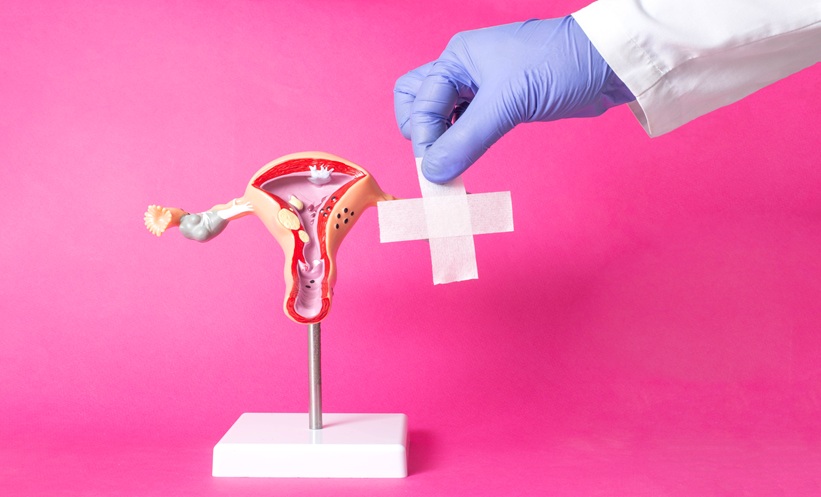Karen Sermon | Vrije Universiteit Brussel, Belgium; Chair, European Society of Human Reproduction and Embryology (ESHRE)
Citation: EMJ Repro Health. 2024;10[1]:42-44. https://doi.org/10.33590/emjreprohealth/DWBD4056.
![]()
Who or what influenced your decision to pursue a career in reproductive medicine, specifically focusing on genetics and embryology?
I went to medical school in Brussels, but I knew very early on that I didn’t want to practice, I wanted to go into research. So, I looked around on campus to see who was doing research, which is when I found André Van Steirteghem and Inge Liebaers. At that moment, Steirteghem was setting up the in vitro fertilisation (IVF) lab and they had just started having pregnancies, and Liebaers was just starting up the genetic centre there. Once I finished medical school, I became a PhD student there. It’s actually Van Steirteghem who pushed me very early on to be involved in the European Society of Human Reproduction and Embryology (ESHRE). My first ESHRE Annual Meeting was in 1988 in Malmö, Sweden, and I didn’t have my diploma yet. From then on, I was just going to the conferences and presenting, and gradually, I got involved in organising things for ESHRE. So, I’ve always been active in ESHRE during my whole professional life.
What are some of the unique challenges associated with providing care in your field? And how do you think the annual meeting helps to tackle these?
Well, one of the main issues is that, because this is an ethically sensitive area covering topics such as reproduction, abortion, egg donation, sperm donation, surrogacy, and IVF, it is often on the fire. For example, egg and sperm donations are not allowed in every country across Europe. It is therefore a challenge to have an overview across the whole of Europe, especially from the point of view of the patients. What is also challenging is understanding if a patient’s need cannot be provided for in their country, they have to travel across borders. One of the things we are trying to do at ESHRE, and I think we’ve succeeded so far, is to have access to the European Union (EU) and other bodies and councils across Europe to defend patients and their rights.
As ESHRE’s President, what are your main three objectives and vision for the organisation, especially concerning healthcare professionals in reproductive medicine?
To be honest, ESHRE is a very well-oiled machine. So, there are 20 members of the ESHRE staff, and we’re constantly modernising. For example, our education, which used to be the classic going to meetings, is now all available online and digitally. We’re now trying to make that even better and more streamlined. We also have our accreditation, which is important to us and to the people who receive it. For instance, embryologists now have a recognised diploma and, as such, more security in their jobs. That is important. The science is also important; I’m a scientist and I’m leaving out science! Science is of course the basis and foundation of everything, and we really tried to push this forward. We have plans to help research more in the future than we are at the moment, as we are, of course, advocates of evidence-based medicine with our guidelines and our good practice recommendations.
What are the most impactful initiatives ESHRE has implemented recently to advance patient care and research?
We are very proud to have an ongoing EU research project, the EuMAR project, which is a registry for cycle-by-cycle data on all medically assisted reproduction treatments that we introduced about a year and a half ago. So, if a patient or patient couple goes to clinic A and has a number of treatments that don’t work or they’re not happy with and they go to another clinic, we will have all the data ready. This is also the case if they cross the border from one country to another, we can still follow them. We can track the outcomes, because what is also very important for us, of course, is that it’s not just about helping our patients get pregnant and have a baby, but we also want to help them have a healthy baby, a baby that will grow up to be a healthy person. This project will help us, it’s going to be a huge database and a huge piece of software.
Previously, you were instrumental in founding the ESHRE PGD Consortium, and coordinating the ESHRE’s Special Interest Group Reproductive Genetics. How have you seen these groups influence healthcare in Europe?
Genetics is a smaller part of ESHRE. I mean, the large chunk if you look at the lab side of things is, of course, embryology; but genetics has more and more influence now on how embryologists think and practice. Because initially, preimplantation genetic diagnosis (PGD) was just about helping couples who are at risk of having a child with a genetic disease to avoid that by delivering a diagnosis at the level of the embryo. Healthy embryos were then transferred, and that was it. But now, the more we learn about the very specific things that occur in oocytes in embryos; we are cracking the code of the cell biology of the embryo. And that is, of course, largely thanks to the work that the geneticists have done. And of course, now every clinic has a genetic counsellor, specifically for people who have PGD.
Reflecting on 40 years of the ESHRE Annual Meeting, how instrumental do you believe the society has been in fulfilling its mission statement “to promote interest in infertility care and to aim for a holistic understanding of reproductive biology and medicine”?
I think we’ve been instrumental, because at this moment we are the first point of contact if the EU wants something that has to do with reproductive medicine, and we’ve worked hard to get to that place. A very important example is the regulation around the substances of human origin, which originally was about blood and organ transplantations. We were not involved in the first version, and it was a nightmare for the people in the lab. All the oocytes and the sperm were meant to be handled in sterile lab hoods with these thick rubber gloves, which were impossible to work with. Also, if I donate blood to you, that’s from person A to person B, it is very simple. But here you have an oocyte and a sperm that come together to make a third entity that is then going back into person A. The idea was that sperm had to be treated like blood, with the same levels of sterility. So, there were some complications there, and when we became involved, we stressed that it was not going to work that way. Subsequently, the latest version just came out, and we were very instrumental in changing a number of things.
Are there any sessions that you’re particularly looking forward to?
One that I would highly recommend is our Live Journal Club. We have a journal club every month, and a group of young, enthusiastic people who are very dedicated to ESHRE choose one paper from Human Reproduction, and then they discuss it. Once a year, there’s a live session here, and it’s always very engaging. This year, it was on the paper discussing our guidelines regarding ‘add-ons’ in IVF. Then there was another session I was excited to attend on basic science, which was the ’Molecular Human Reproduction’ symposium. It was about embryo models that we make these days from embryonic stem cells.
How do you envision the future of reproductive medicine, particularly in terms of patient care and research advancements?
There’s been a lot of evolution. We started strictly with the treatment of patients with tubal problems, such as blocks. Then we went on to treat male infertility, and my centre was instrumental in introducing intracytoplasmic sperm injection. Now, our definition of infertility, for instance, is broad enough to include social infertility, such as same-sex couples and single mothers. I think, more and more, we are a very open and very proudly progressive society.







